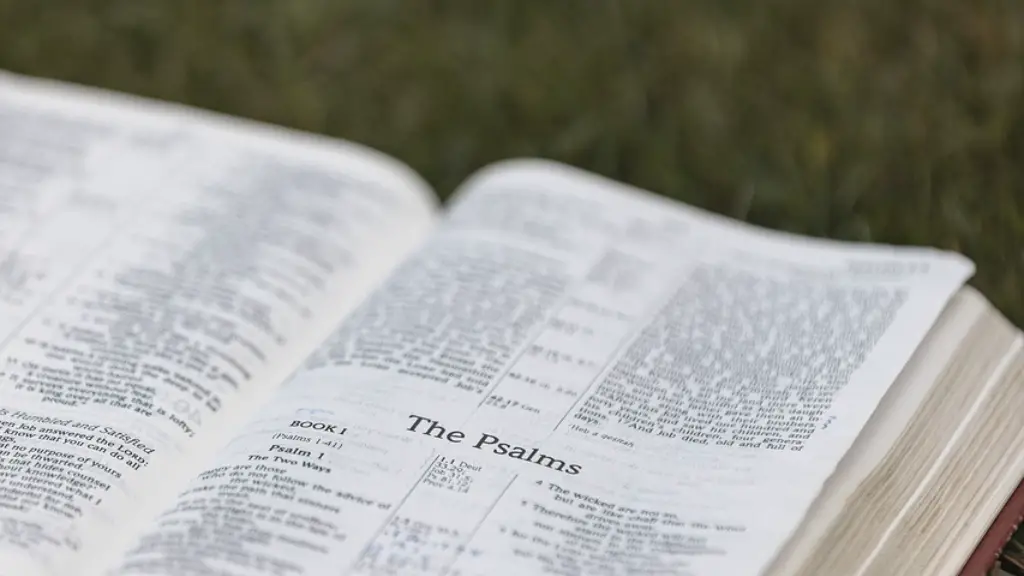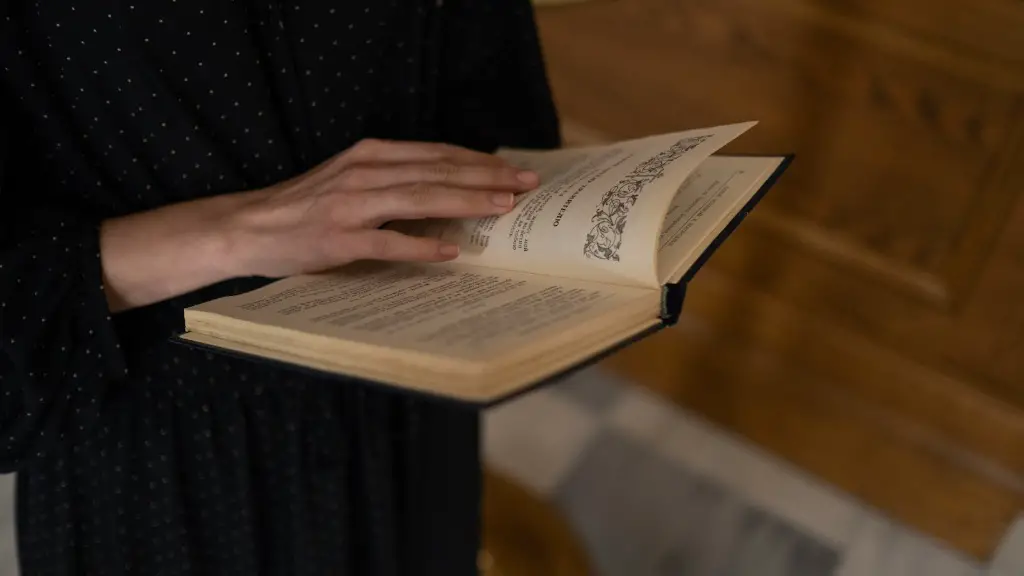The Bible is an ancient book, and as such, can be difficult to understand. Many people wonder what the best order to read the Bible is.
There are a few different ways to approach reading the Bible. One way is to read it chronologically. This means reading the events in the order that they happened. Another way is to read it thematically. This means reading about specific topics, such as love, forgiveness, or redemption.
Whichever way you choose to read the Bible, the most important thing is to read it with an open heart and mind. Allow the words on the page to speak to you, and don’t be afraid to ask questions. There is no wrong way to read the Bible, so long as you are seeking to grow in your understanding of it.
The Bible can be read in many different ways, but there is no one “best” order. It all depends on what you hope to gain from reading it. If you want to get a general overview of the Bible, then reading it from beginning to end is a good option. If you want to focus on a particular topic or book, then you may want to read those sections first. Ultimately, it is up to the individual reader to decide what order works best for them.
What order should I read the Bible for the first time?
The Gospels are the first four books of the New Testament. They tell the story of Jesus Christ, from his birth to his death and resurrection. If you’re new to the Bible, the Gospels are a great place to start. They will introduce you to Jesus Christ, the incarnate Son of God.
This is a great way to start your Bible study! By following a simple historical narrative, you can easily understand the context of each book and how it fits into the overall story of Scripture. Additionally, reading through the Bible in chronological order will help you gain a better understanding of the historical flow of events.
What is the correct way to read the Bible
The gospel approach to reading the Bible is the best way to understand Scripture. This means that we read every passage in light of the single, overarching storyline of Scripture, which culminates in Jesus. By doing this, we can better understand how each individual passage fits into the big picture of God’s redemptive plan. Additionally, this approach helps us to see how the gospel message is woven throughout all of Scripture, from Genesis to Revelation.
There is no one “right” way to study the Bible, but many people find that studying it chronologically can help to bring clarity to God’s character. This approach can provide a more full comprehension of who God is and how He has interacted with His people throughout history. If you are interested in trying this approach, there are many resources available to help you get started.
What is the fastest way to learn the books of the Bible in order?
It is important to first memorize the order of the books in the Bible. This can be done by reading as much as possible about each book and memorizing facts about them. It is also helpful to write summaries of each book and your thoughts about them. Discussing the books with others often can also be helpful. Finally, listening to lectures about each book in order can be riveting and helpful in memorizing the order.
There are a few reasons for this. First, the New Testament tells the story of Jesus, who is the center of Christianity. Second, the New Testament was written after the Old Testament, so it builds on and interprets the Old Testament. Third, the New Testament is where we find the teachings of Jesus and the apostles. fourth, the New Testament is where we find the story of the early Church.
Should my first Bible be a study Bible?
A study Bible is a great tool for Bible study, especially for those who are reading the Bible for the first time. A study Bible typically includes resources like a concordance, maps, and notes from scholars and theologians. This can be a helpful way to understand the context of the Scripture and to deepen your understanding of the Bible.
1. Pray for a hunger for God’s Word.
2. Set a definite time for reading the Bible.
3. Read consecutively, turning your heart to the Lord.
4. Pray over what you read.
5. Keep track of your Bible reading.
6. Guard against distractions.
What is the easiest form of the Bible to read
The Holy Bible: Easy-to-Read Version (ERV) is an English translation of the Bible compiled by the World Bible Translation Center. It was originally published as the English Version for the Deaf (EVD) by BakerBooks. The ERV is a translation of the Bible into simple, easy-to-understand English. It is based on the American Standard Version of the Bible, but it has been simplified so that it is easier to read. The ERV is perfect for people who are learning English or who are not familiar with the Bible.
The Easy-to-Read Version (ERV) is a translation of the Bible that was written specifically for people who find reading difficult. It uses easy words and short sentences, making it one of the easiest Bibles to read and understand.
Do Christians follow the New Testament or old?
These Christians are living under the law of Christ, which means they follow all the laws found in the New Testament. While this may be a fair way to live, it’s important to remember that not all Christians feel the same way. Some Christians may believe they are above the law, or that only certain laws from the New Testament apply to them. It’s important to have a respectful dialogue with these Christians to understand their point of view and see if there is common ground to be found.
If you’re looking to read the Gospels for the first time, a popular option is to start with the Gospel of Mark. The shortest of the four Gospels, it’s also thought to be the earliest account to be written. As such, there’s a helpful urgency to the way it tells the story of Jesus’ life, death, and resurrection.
How do I start studying the Bible alone
There are many different ways to study the Bible, but one effective method is to choose a book or section of the Bible to focus on, find relevant verses on the topic, read the verses in context, and read each verse in multiple translations. This will help you to understand the meaning of the verses and how they apply to your life. Additionally, looking through Bible commentaries can provide further insight into the meaning of the text.
The “Sword” method of Bible Study is a simple and easy way to study the Bible. It’s also a good way to train someone how to teach the Bible, lead a Bible discussion or small group. The small group leader can simply ask the 3 questions one by one and let people answer.
What are the 4 ways to read the Bible?
The literal approach to hermeneutics interprets the Bible as a literal, historical document. This approach is also sometimes called the historical-grammatical approach. It emphasizes the need to understand the historical and cultural contexts in which the Bible was written.
The moral approach to hermeneutics interprets the Bible as a book of ethics. This approach emphasizes the need to understand the ethical principles that are taught in the Bible.
The allegorical approach to hermeneutics interprets the Bible as an allegory. This approach emphasizes the need to understand the spiritual meaning of the biblical stories.
The anagogical approach to hermeneutics interprets the Bible as a book of prophecy. This approach emphasizes the need to understand the future events that are foretold in the Bible.
The 3030 Challenge is a great way to grow in your understanding of the Bible. By reading for just 30 minutes a day, you can learn a lot about what the Bible says and how it applies to your life. I encourage you to give it a try!
Final Words
There is no one “best” order to read the Bible. Different people find different parts of the Bible more meaningful or useful, and will read it in different ways. Some people choose to read the Bible chronologically, following the order of the events that are described within it. Others prefer to read it thematically, focusing on specific topics or themes. Still others simply read it straight through from beginning to end. Whichever approach you choose, the important thing is to read the Bible thoughtfully and prayerfully, letting it speak to you and challenge you in your own life.
The best order to read the Bible is up for debate. Many people suggest starting with the New Testament and then reading the Old Testament. However, others say that it is best to read the Bible chronologically. Whichever order you choose to read the Bible, make sure to read it with an open heart and mind.





